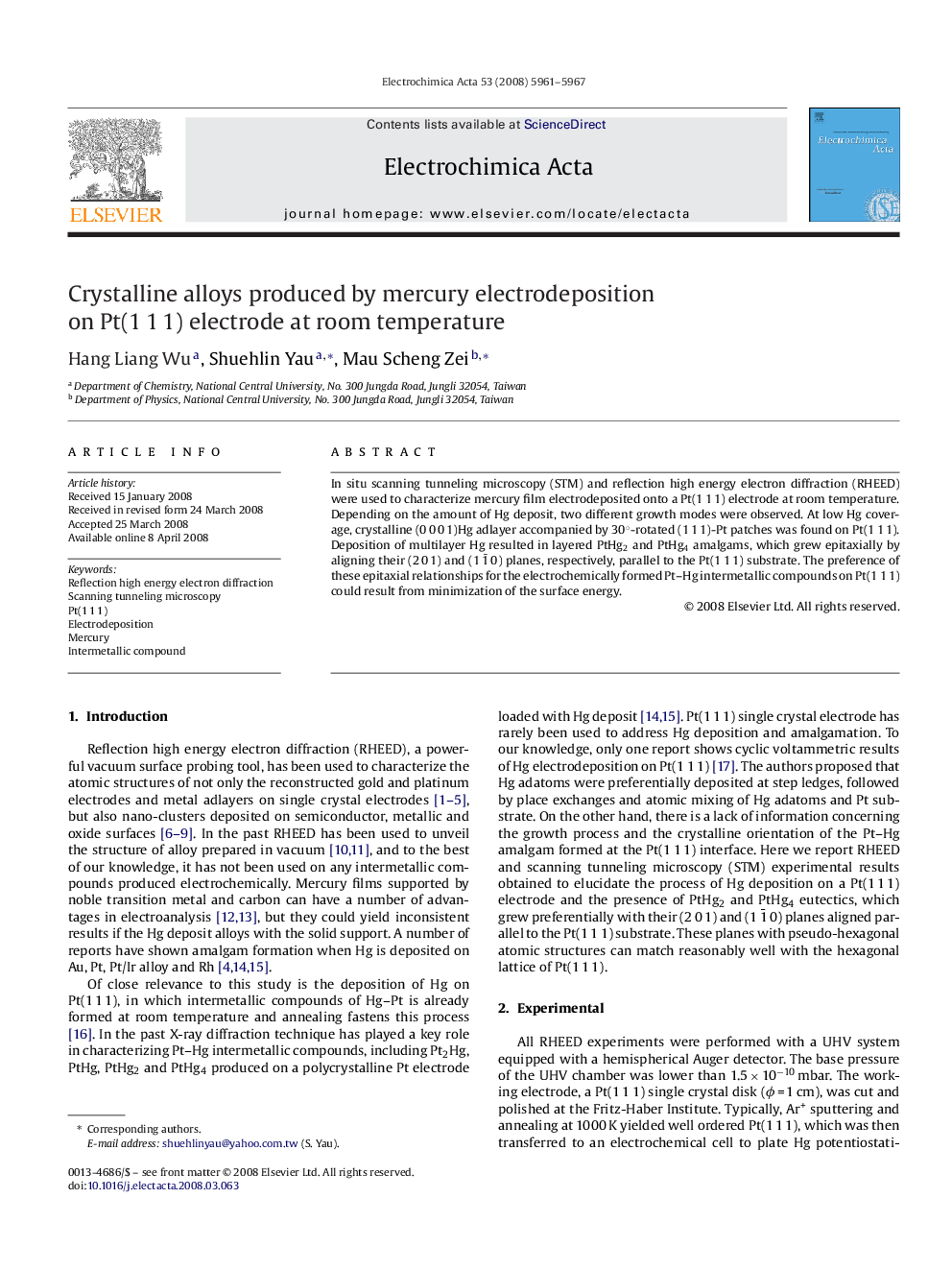| Article ID | Journal | Published Year | Pages | File Type |
|---|---|---|---|---|
| 192047 | Electrochimica Acta | 2008 | 7 Pages |
In situ scanning tunneling microscopy (STM) and reflection high energy electron diffraction (RHEED) were used to characterize mercury film electrodeposited onto a Pt(1 1 1) electrode at room temperature. Depending on the amount of Hg deposit, two different growth modes were observed. At low Hg coverage, crystalline (0 0 0 1)Hg adlayer accompanied by 30°-rotated (1 1 1)-Pt patches was found on Pt(1 1 1). Deposition of multilayer Hg resulted in layered PtHg2 and PtHg4 amalgams, which grew epitaxially by aligning their (2 0 1) and (1 1¯ 0) planes, respectively, parallel to the Pt(1 1 1) substrate. The preference of these epitaxial relationships for the electrochemically formed Pt–Hg intermetallic compounds on Pt(1 1 1) could result from minimization of the surface energy.
